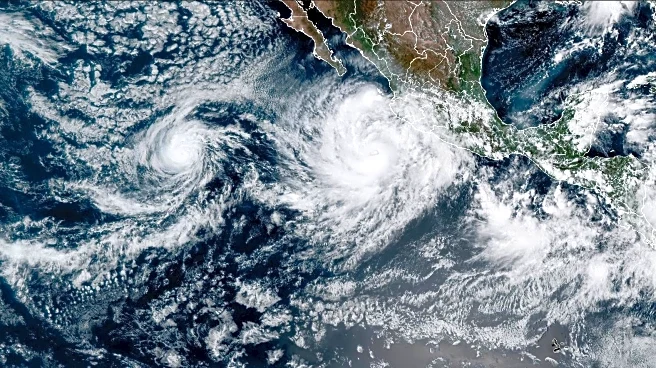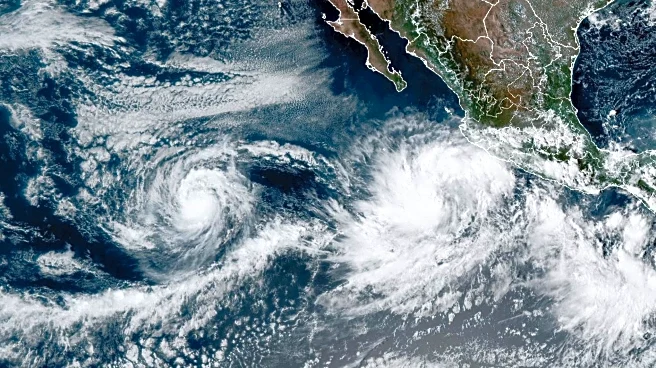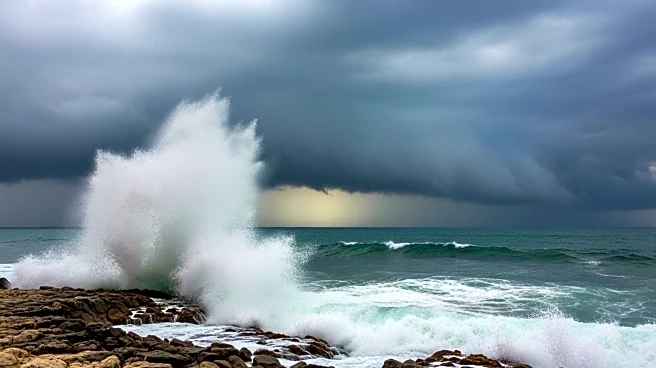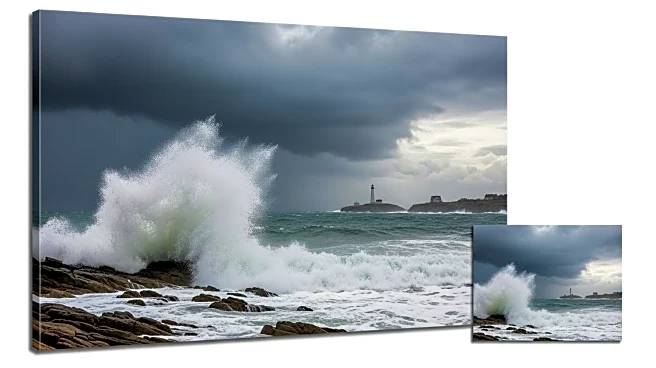What's Happening?
Hurricane Priscilla has intensified in the Pacific Ocean, posing a threat to the southwestern coast of Mexico. Initially forming as a tropical storm, Priscilla strengthened into a hurricane on Sunday, according to the National Hurricane Center. The storm is currently located approximately 290 miles south-southwest of Cabo Corrientes, near Puerto Vallarta, and about 485 miles south-southeast of the southern tip of Baja California. It is moving north-northwestward at 6 mph with maximum sustained winds of 75 mph. Although the hurricane is not expected to make landfall, tropical storm conditions, including strong winds and heavy rainfall, are anticipated in areas under a tropical storm watch. The affected regions include parts of Michoacán, Guerrero, Colima, and Jalisco, where rainfall could lead to flash flooding, particularly in higher terrain areas. The storm is also expected to generate dangerous surf and rip currents along the coast.
Why It's Important?
The intensification of Hurricane Priscilla poses significant risks to the southwestern Mexican coastline, with potential impacts on local communities and infrastructure. The heavy rainfall forecasted could lead to flash flooding, which is particularly dangerous in mountainous regions. Additionally, the strong winds and surf conditions could disrupt local economies, particularly those reliant on tourism and fishing. The storm's path, running parallel to the coast, means that while direct landfall is unlikely, the peripheral effects could still be severe. Emergency services and local governments may need to prepare for potential evacuations and damage control, highlighting the importance of timely and accurate weather forecasting in mitigating natural disaster impacts.
What's Next?
As Hurricane Priscilla continues to move parallel to the Mexican coast, authorities are likely to maintain or extend tropical storm watches and warnings. Residents in affected areas should remain vigilant and follow guidance from local officials regarding safety measures and potential evacuations. The National Hurricane Center will continue to monitor the storm's progression and provide updates on its intensity and trajectory. Coastal communities should prepare for possible disruptions and ensure that emergency plans are in place to address the risks posed by heavy rainfall and dangerous surf conditions.
Beyond the Headlines
The development of Hurricane Priscilla underscores the broader challenges posed by tropical storms and hurricanes in the Pacific region. As climate patterns evolve, the frequency and intensity of such storms may increase, necessitating improved infrastructure resilience and disaster preparedness strategies. The potential for flash flooding and coastal erosion also highlights the need for sustainable land management practices to mitigate long-term environmental impacts.












